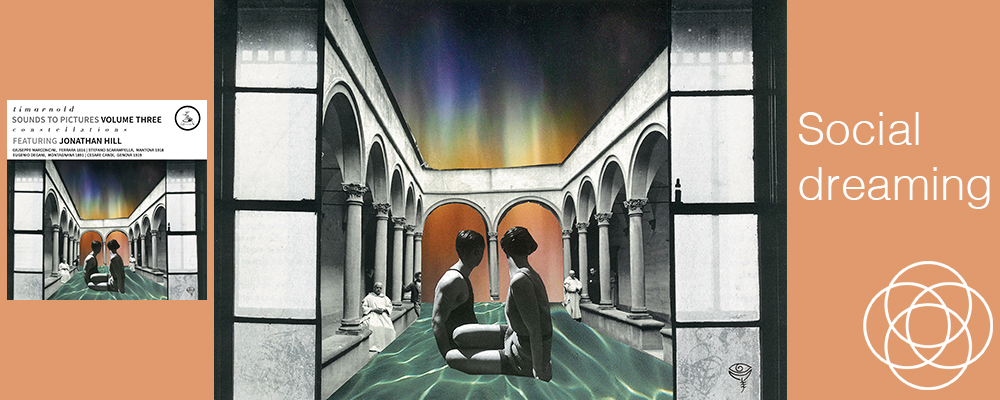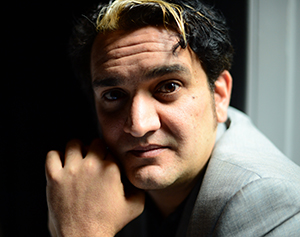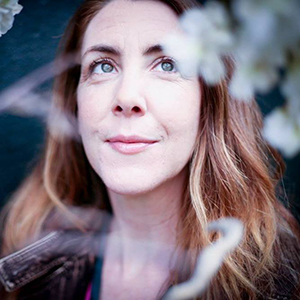
Imagine this: as you fall asleep and dream, a musician sits at his piano and reaches into the music sphere, opening to the dream world, composing music to gift you upon awakening.
Then imagine this: You, the dreamer, fall asleep listening to that very same composition, reaching into the dream sphere, opening to the music, awakening with dream symbols you draw upon to create the collage art work for the musician’s album.
The musician is veteran singer-songwriter Tim Arnold, and the dreamer and artist is Kate Alderton, both based in the UK. The resultant album, Constellations, featuring violinist Jonathan Hill, was released this week. There are ten compositions, each written on a different night over the space of ten weeks. Each night began with a phone conversation about dreams, before Kate retired to bed and Tim took his seat at the piano.
I immersed in the album earlier this month. It was an absolutely transporting delight. I particularly enjoyed the tracks Who Looks Outside, Dreams; Who Looks Inside, Awakens; and The Path of Heart. The soaring violin played my heartstrings across the board of the whole album.
I was drawn to this project because it encompasses dreams, synchronicity, music, and a novel experimental approach to composition, so I was keen to interview Tim and Kate to discover more. They were each so engaging, that I decided to include all their responses to my questions.

Tim Arnold (Photo by Tony Briggs)
Jane Teresa: You said you talked about dreams on the phone with Kate before she slept and you started composing. Were these open-ended conversations, or was there a structure?
Tim: When Kate and I starting talking to each other about dreams, it just happened to coincide with the time that I was preparing to make an album with my friend and collaborator, violinist, Jonathan Hill. So, there was no structure when I began composing the music. It was completely organic, but utterly inspired by our meeting of minds. There is a vibrant and active dreaming community in the UK and Kate is held with great affection by that community. We met acting together in a film project, and when she told me she was a dreamer, I didn’t think she meant it so literally. But since meeting other dreamers in that community, I realised that in the same regard that I am a musician, Kate is a dreamer. And if dreaming is an instrument, she’s a virtuoso.
The conversations were fairly open ended and sprung out of my curiosity about dreams and Kate’s openness to share her rich wisdom about it with me. When I’m in composing mode, I tend to start late and go on until the early hours. During that time, Kate was on a more conventional schedule and going to sleep when I was beginning to compose. I’d say goodnight, put down the phone, go to the piano and begin reaching into the music-sphere as she was entering the oneirosphere. I can say that now, but at the time, all I knew was that my head was full of what we’d shared on the subject of dreaming. I suppose it inspired me, and every time we continued the conversation on subsequent nights, it continued to inspire me, until the whole album was written. I was encouraged to listen to my dreams as a child. This process, with Kate’s encouragement, has rewilded that childlike wonder.
Jane Teresa: What was your intention behind the process? Did you want to capture the essence of Kate’s dreams while you were working? Or did you hope to influence her dreams with your creative process? Or did you intend to co-create (the music and her dreams)?
Tim: I think there was an element of me wanting to continue the conversation with Kate after we’d said goodnight. Composing and recording reflected the excitement and awakenings I was discovering during our conversations. I just poured them into a musical instrument. I would have talked all night if it had been possible, so carrying on with the music was the next best thing. I wasn’t consciously hoping to do anything other than express the energy inside me that came from talking about dreams. I think for the first three songs I composed, I didn’t identify any particular process. But by the time I’d written the 5th song, I realised that I had a creative partner in Kate. I realised then, that the music was all being created at about the same time she would have been entering into REM sleep and dreaming.
Jane Teresa: How long did you spend composing on the average night?
Tim: I think the main body of most of the songs were all written between midnight and 5 o’clock in the morning. There were also compositional nips and tucks the following night before I began a new song, but on the whole, Constellations was composed in and around the witching hour on ten different nights over the duration of ten weeks.
Jane Teresa: Which is your favourite track?
Tim: With most of my albums, I usually only feel strongly about songs I’ve written and recorded in the same way that a teacher marks exam papers. Good. Very good. Must Try harder. Imaginative but lacking structure. Needs more development. That kind of thing. I’m usually very studious and trying to stretch myself and my abilities, and I don’t really have favourites because I’m so critical of everything I do. They are all exercises in a way. However, with Constellations, I didn’t try to achieve anything. I closed my eyes most of the time when I began to play piano. I was in a liminal state of mind. Whatever came out from between my fingers and the keyboard is what you hear on the album. I love all the songs, but in the same way I love someone else’s album. I don’t feel entirely responsible. It’s come from somewhere other. Maybe The Path Of Heart touches me the most.
Jane Teresa: What surprised you the most during this whole process?
Tim: The first surprise about Constellations is that it all came as a unified whole from beginning to end in the same couple of months. My previous albums are made out of songs and ideas that come from different periods of times in my life and different places. Constellations is a chunk of time and a sonic diary entry for me. But the biggest surprise and one that makes me so happy was Kate’s ability to continue the creative conversation. The music was born while she dreamt, and when she finally heard the music, she dreamt again and created the artwork from the imagery in those dreams. Taking the fruits of your inspiration back to their source and witnessing the source also being inspired to develop the work into another medium is a kind of alchemy I’ve never experienced before. It’s like an infinity gift.
Jane Teresa: Is there anything you’d like to add?
Tim: We’re now talking about holding Social Dreaming Events where we can bring our creative partnership into a live situation with people who can participate in an exploration of dreams, music and imagery. I’d also like to add how grateful we are to you for taking interest in Constellations. Thank you Jane.

Kate Alderton (Photo by Greg Donaldson)
Jane Teresa: In the first phase, when you had the phone conversations and then slept while Tim composed, were the dreams you had quite different from your ‘normal’ dreams? If so, how did they differ? Did your dreams seem to address the issues and topics you had talked about?
Kate: When our conversations began I’d just returned from a waking-life pilgrimage with a group of artists to Jung’s house in Bollingen and the eco-art community Damanhur. That journey was inspired by a dream, so we talked a lot about dreams as fuel for life’s passages and ‘living’ dreams. We began reading Jennifer Dupert’s incredible book Liminal Dreaming and talked about crossing through the hypnagogic corridor into the full dreaming with focussed attention. Re-reading the dreams from this time, there were lots of vast landscapes present and the deeper the conversation, the more enriched with symbolic imagery the dreams became.
Jane Teresa: In the first phase, did you have a feeling that Tim’s composing was influencing your dreams?
Kate: It was a while before we realised a process was naturally happening between the dreaming and the composing. I’ve always felt that dreams pay special attention to those who pay attention to them and once we became aware of the linking between the two, there was a growing ‘supposing’ that we could be occupying a shared space which Tim could access through music and I could access through dreaming. This had a huge effect on my dreaming. I drifted off to sleep full of curiosity about where I’d end up and about the ways in which my dreaming might resonate with the sounds that Tim was accessing while I slept.
Jane Teresa: In the first phase, did you notice any performance anxiety: did you go to sleep hoping you’d come up with amazing dreams?
Kate: Looking back, I think I often fell asleep in a state of curiosity about what our conversations might seed in the dream fields. I’m part of a regular dream sharing community The Dreamfishing Society and I guess one of the things I’ve learned most from an extended period of dream sharing is the value that smaller dreams can have. I love it when ‘big’ dreams happen, but I’ve found dream wisps and faint threads of dreams can also offer so much meaning and insight depending on how you work with them or who you tell them to.
Jane Teresa: In the second phase, when you listened to the finished compositions and then went to sleep, did you listen to one track per night, or to the whole album?
Kate: When Tim first sent me the links to Constellations it was like listening to the sounds of the border crossing between waking to dreaming. I listened to the full album during waking hours then began to experiment with listening to it in its entirety as I drifted across into the dream states. The soundscapes Tim and violinist Jonathan Hill have created are sound journeys into the inner realms, the compositions are so vast. In waking hours I find they invoke a dream like state and at night the music becomes like a vehicle to assist travel into the dreaming lands.
Jane Teresa: In the second phase, did you listen to the music once, or did you have it on repeat as you slept?
Kate: The artwork we’ve used for the album came from dreams that arose after I completely immersed in the music during the day and listened to the full album as I fell to sleep. I’m still actively in the second phase and continuing an exploration with the music. I’m experimenting with following Tim’s 10 week structure, listening to each track on repeat during the night and to the whole album on repeat in a process we call dreamstreaming. I’ll be creating 10 collages, one for each of the ten compositions, from the dreams that emerge when they’re fed throughout the night with the music.
Jane Teresa: In the second phase, were the dreams you had quite different from your ‘normal’ dreams? If so, how did they differ?
Kate: There’s a shift that happens when I focus my attention on dreaming for something specific. The visual quality and textures to the dreams are more visceral and richer in imagery. Working with Tim’s album was a form of dream incubation using his sound as the delivery method. When I listened to Tim’s incredible music, the dreams often responded with sound and light: invisible, oscillating sound strings being played across infinite spaces, of becoming an embodied, dancing version of the sound itself. In one of the dreams I was aware of dwelling in the space in between two very specific notes which Tim later identified as what’s known as the ‘tritone’ or ‘the devil’s interval’.
Jane Teresa: What did you learn about dreaming and about yourself during this period?
Kate: It’s been such a privilege watching how Tim works, catching the very first threads of songs from the musicsphere and expanding them into these hugely beautiful layered soundscapes. It reminds me of the way a dreamer might catch the faint wisp of a dream from the oneirosphere in the early hours of the morning and pull at it lightly enough until an entire dream comes through.
What I’ve loved about merging sound with dreams in this way is that we’ve found ourselves in a creative structure that emerged, rather than the other way around. The music, the dreaming and the collages have been in call and response with each-other, back and forth across the waking dreaming states. The whole project has been such an intuitive way of working. We’re following the unfolding nature of how it wants to be made, much like the unfolding of dreaming itself.
Jane Teresa: Did the collage work help you to understand those dreams more?
Kate: Absolutely. Working with cut and paste collage rather than digital helps me to bypass my rational mind in favour of a more instinctive one because I can only work with the materials and images at hand rather than try to plan anything. Synchronous links and patterns begin to emerge between the images I find and the content of the dreams as I work, often revealing forgotten or surprising aspects of the dream and new thoughts about what it might mean. When I write down a dream, it’s a snapshot encapsulated in words: with an artistic process it becomes more like a conversation with the dream. Dream art creates an experience and quality of aliveness to the dream as it continues to unfold itself. The dream keeps on dreaming through the art.
Jane Teresa: Which is your favourite track?
Kate: It’s hard to choose! I love how each track paves the sound journey into the next. It’s like a film score for dreaming, but with ‘Who Looks Outside Awakens’ Tim’s reached so deeply into the far reaches of inner and outer space: that’s the one I hear in my inner ear when I recall a dream about light and the Aurora Borealis which became ‘The Promised Sky’ the art work I created for the front cover of the album.
(Note: Kate’s album art work is featured in the header image for this blog.)
The Constellations album is available on stream, download and Limited Edition CD.
You might also enjoy
